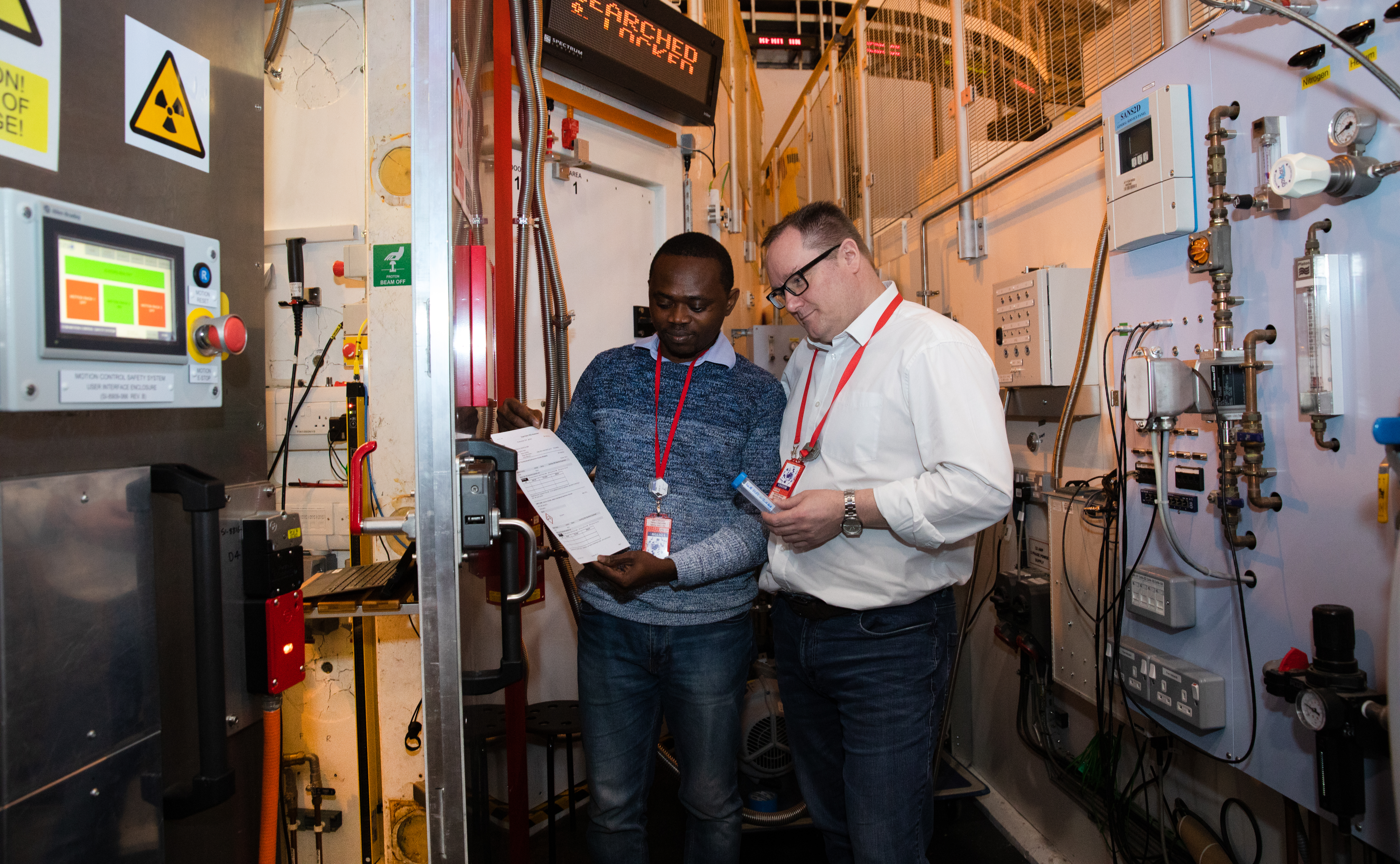A collaboration between the ISIS Support Labs Group and the ISIS Computing division began developing the ERA system back in 2009. The previous 'sample risk assessment sheet' completion was manual and time consuming, and relied on one person carrying out a risk assessment for each experiment based on the proposal submitted. With the number of proposals continuing to increase, the group saw the opportunity to develop something new that would make a real change.
Led by Marek Jura and Hannah Griffin, the group developed a system to make the process more efficient and streamlined. After carrying out a trial, and using feedback forms and workshops to develop the user interface, they were able to develop a system that worked for everyone.
“Reaching the 10,000th ERA is a big milestone," says Marek; “it was hard to get the process off the ground, but it has been very successful, and I am proud of what we have done."

Photograph: Members of the sample
safety team and software development group with ZOOM beamline scientist Diego
Alba Venero.
As the experts in their own materials, the users start the process by completing the information about the sample. The next stage is the instrument scientists: as experts on the beamline, they are able to use their knowledge to add to the information required before the ERA goes to the Sample Safety team.
The Sample Safety team act as the final approval step for users bringing samples to ISIS; they provide a unique viewpoint. They may not know the samples, or the area of work, as well as the users, but their specialism is the knowledge of the working of ISIS, the sample environments available, and assessing their influence on the stability of the sample. If a particular sample is high hazard, then they will be involved at the proposal stage. This enables them to put together a new safety case detailing how to manage the sample in the particular environment it will experience at ISIS.
Once the team has assessed the experiment, they will publish the ERA. If there is a particularly complicated experiment, or hazardous sample, they will be present on the beamline to offer their advice to the users and the beamline scientists. This is especially helpful when an experiment may not be going to plan, and changes need to be made to the procedure or conditions during the experiment.
The type of experiments taking place at ISIS has increased in complexity since 2009: from measuring powder/crystalline samples in a simple experimental process to those that involve in situ experiments and/or multiple techniques. This leads to more complexity into the sample environment: gas flow and pressure changes for example, and therefore more consideration required during the ERA process.
Over the years, the team has been presented with many peculiar proposals: from dealing with hazardous peroxides, hydrogen fluoride and osmium compounds to burnt human bones, a dinosaur egg and multiple experiments involving taking explosive materials to high pressure!
During the ten years of use, the ISIS software development team is constantly developing the ERA system: there are still some improvements needed, and small changes to the user portal are released before the start of each user cycle to combat this.
The recipients of the milestone 10,000th ERA were Wasiu
Abdullahi and Professor Peter Griffiths from Greenwich University (in photograph below). They are studying the nanoscale structures that are present in air-in-water foams using ISIS' newest beamline, ZOOM.

